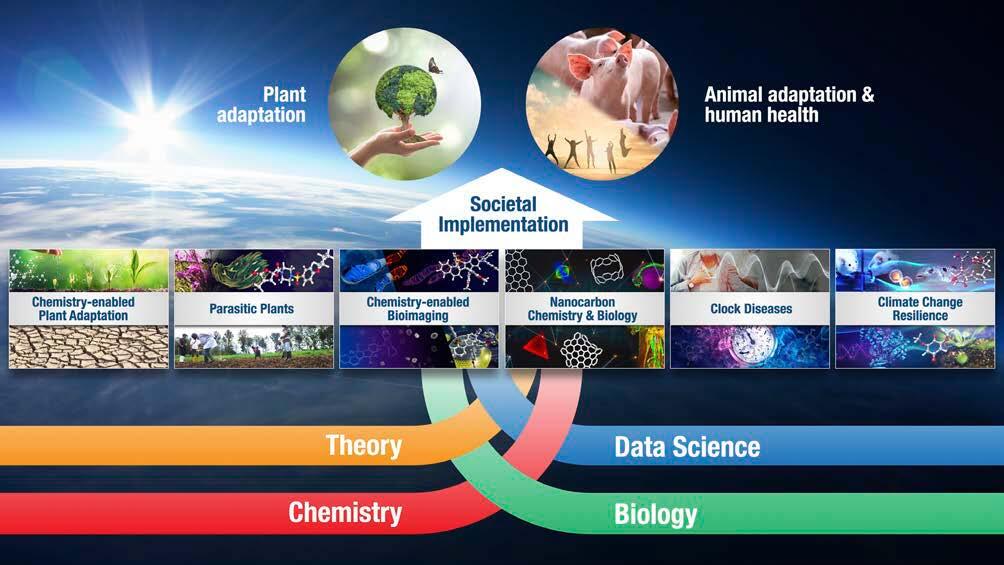
At ITbM, chemists, biologists and theoreticians are
collaborating side by side to design, synthesize and evaluate
new transformative bio-molecules, and to generate a new
research area on the boundaries of chemistry and biology. By taking full advantage of our strengths, ITbM has been
conducting 'needs-inspired' basic research and explored
new research areas of "plant chemical biology", "Striga",
"chemical chronobiology", and "chemistry-enabled live
imaging" at the beginning of ITbM, "ITbM 1.0". Going forward
with its mission/goal of developing transformative biomolecules, ITbM set the strategy "ITbM 2.0", and started the following challenges: "chemistry-enabled plant adaptation", "parasitic plants", "clock diseases", "chemistry-enabled bioimaging", "nanocarbon chemistry and biology", and "climate change resilience". These endeavors will address various social issues regarding the environment, food production, and medical technology.
ITbM has become a truly exciting and internationally
visible institute where new interdisciplinary fields of research are emerging and new molecules are being born every day. Although some activities have been limited since FY2020
due to the COVID-19 pandemic, our dream of changing the
world with molecules is clearly bearing fruit. ITbM's challenge continues.
